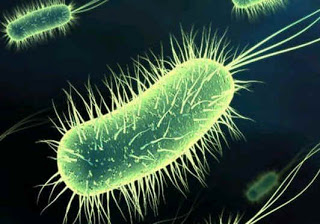You trust us for the water you drink – How about the air you breathe?
Allergies in our family seemed to be getting worse and drugs are not always the best answer. We have a cat and wondered if that might be part of the problem. We became increasingly concerned about our indoor air quality, so we began our research. EPA lists indoor air pollution as one of the top five risks to our health. Dust mites, pet dander, pollen, smoke, viruses, dangerous bacteria, mold, fungi, chemicals, household products, pesticides, ammonia, alcohol and formaldehyde can be present in the air.
Did you know that Dust Mites produce 2,000 fecal particles and even more digested enzyme-covered particles in their lifespan?
 Microorganisms such as viruses, bacteria and mold can cause infectious diseases and may trigger allergic reactions. Volatile Organic Compounds (VOCs) are emitted as gases and can cause short and long term health effects. Formaldehyde is one of the most common VOCs. Formaldehyde is a colourless gas with a strong smell. It is common in many building materials such as plywood, particleboard, and glues. Formaldehyde can also be found in some drapes and fabrics, in addition to certain types of foam insulation. Ot
Microorganisms such as viruses, bacteria and mold can cause infectious diseases and may trigger allergic reactions. Volatile Organic Compounds (VOCs) are emitted as gases and can cause short and long term health effects. Formaldehyde is one of the most common VOCs. Formaldehyde is a colourless gas with a strong smell. It is common in many building materials such as plywood, particleboard, and glues. Formaldehyde can also be found in some drapes and fabrics, in addition to certain types of foam insulation. Ot her sources of VOCs include the burning of fuels such as gas, wood and kerosene, as well as tobacco products. VOCs can also come from personal care products such as perfume and hair spray, cleaning agents, dry cleaning fluid, paints, lacquers, varnishes, hobby supplies, and from copying and printing machines. VOCs can be released from products during use and even in storage. However, the amount of VOCs emitted from products tends to decrease as the product ages.
her sources of VOCs include the burning of fuels such as gas, wood and kerosene, as well as tobacco products. VOCs can also come from personal care products such as perfume and hair spray, cleaning agents, dry cleaning fluid, paints, lacquers, varnishes, hobby supplies, and from copying and printing machines. VOCs can be released from products during use and even in storage. However, the amount of VOCs emitted from products tends to decrease as the product ages.So What Can We Do About It?
HEPA (High-Efficiency Particulate Air) is a standard for air filtration set by the U.S. Government. HEPA filters are effective (but not 100%) for particles up to 0.3 micron. While this is pretty small, we looked for finer filtration. Also, we wanted a product that would take care of microorganisms and VOCs. Our research led us to Healthway with their DFS (Disinfecting Filtration System) all of our concerns are answered.- VOC protection
- 99.99% of particles as small as 0.007 microns – 50 times finer than HEPA
- 99 – 100% Viruses
- 98-100% Bacteria
- 94-100% Mold and Fungi

